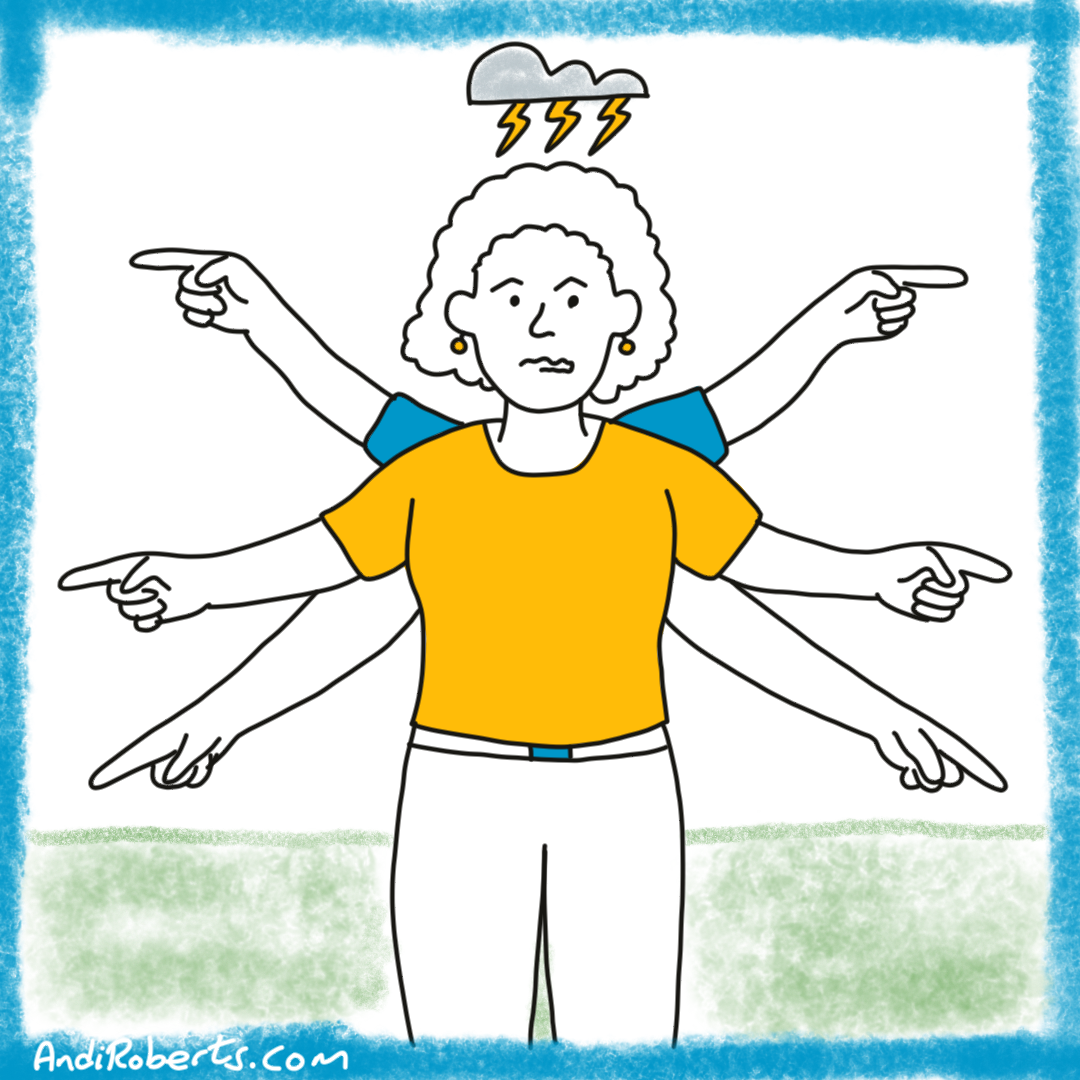Leadership today is lived in conditions of relentless speed and intensity. The pace at which leaders are asked to operate leaves little room for pause, yet it is precisely the absence of pause that creates emotional volatility. Research from Harvard Business Review shows that leaders who fail to integrate daily recovery practices are more likely to suffer from burnout, poor decision-making, and diminished trust from their teams (Schwartz and McCarthy, 2007). A global McKinsey survey of executives found that 60 percent reported feeling often or always exhausted, and this fatigue directly correlated with reduced organisational performance (McKinsey Health Institute, 2022). The Sloan Management Review has highlighted that executives who build deliberate routines for self-regulation and recovery report greater adaptability, higher trust, and stronger team cohesion (Garton, 2017).
The evidence is clear. Emotional self-regulation is not a soft skill to be added after the fact. It is a structural requirement for sustainable leadership. Neuroscience reinforces this point: mindfulness practices have been shown to increase activity in the prefrontal cortex, the brain region responsible for impulse control and complex decision-making, while reducing reactivity in the amygdala, which governs fear and stress responses (Hölzel et al., 2011). Leaders who invest in daily routines that regulate mind and body are not only safeguarding their own wellbeing but are also creating climates of resilience for those they lead.
Daily practices do not remove volatility, uncertainty, complexity, or ambiguity. What they do is allow leaders to carry those conditions differently. They create the space for noticing before reacting, for balance before burnout, and for gratitude before complaint. Leaders who engage in these practices do more than stabilise themselves. They stabilise the system around them. Teams take their emotional cues from those at the top, and when leaders remain centred, they allow others to face turbulence with composure.
The following five strategies form the foundation of ongoing self-regulation. They are not quick fixes. They are habits that, when practised daily, reshape both the leader and the organisation.
Strategy 1: Practice daily mindfulness or reflection
Mindfulness and reflection are foundational practices for building emotional self-regulation. For leaders, the challenge is rarely the absence of knowledge about stress management but the pace of life that prevents conscious application. Mindfulness interrupts autopilot by bringing attention back to the present moment, helping leaders notice emotions before they spiral into reactive behaviours. Reflection, meanwhile, provides a structured way to make sense of experiences, turning emotional data into actionable insight.
Daily mindfulness can take many forms. For some leaders, it involves meditation sessions where attention is placed on the breath and wandering thoughts are gently redirected. Others may find reflective journaling more practical. Writing about events, emotions, and triggers creates space between stimulus and response, helping leaders identify recurring patterns. Over time, journaling provides a record of emotional trends, highlighting moments of growth or areas needing attention. Both mindfulness and reflection help leaders avoid over-identifying with their emotions. Instead of saying “I am angry,” the mindset shifts to “I notice that anger is present,” which softens reactivity and opens options for response.
Leaders who embed these practices often report improvements not just in emotional control but also in decision quality. By observing emotions without immediate judgement, they reduce the risk of being hijacked by stress, defensiveness, or fear. Teams benefit because leaders who regulate their emotional tone create climates of stability. During crises, employees look to leaders for cues on how to interpret uncertainty. A leader who models calm through mindfulness and reflection reassures others that challenges can be managed with composure.
Practical ways to embed this include setting aside 10 to 15 minutes at the start or end of each day for meditation or journaling, integrating short breathing pauses between meetings, or using digital tools that prompt daily reflection. Even brief but regular practices can compound into significant improvements. Reflection does not always need to be private; leaders can schedule monthly peer-coaching conversations to explore patterns in their emotions and responses, making the learning social. The key is consistency, turning mindfulness and reflection from occasional interventions into daily habits that shape baseline regulation.
Strategy 2: Build physical resilience
Physical wellbeing and emotional regulation are inseparable. Leaders under constant strain often attempt to regulate their emotions cognitively, neglecting the biological foundations that make regulation possible. Sleep, nutrition, exercise, and recovery rhythms form the scaffolding on which emotional balance rests. Without these, even the most skilled mindfulness practitioner will struggle to sustain composure under pressure.
Sleep is particularly critical. Research shows that sleep deprivation reduces activity in the prefrontal cortex, impairing emotional regulation and increasing reactivity to stress. Leaders who consistently operate on too little sleep may believe they are performing effectively, but evidence suggests their irritability, short-sighted decision-making, and susceptibility to conflict increase significantly. Prioritising seven to nine hours of quality sleep is not indulgent but a leadership imperative.
Nutrition also plays a vital role. Diets high in processed sugar or lacking in essential nutrients can destabilise mood and energy. Conversely, balanced nutrition supports consistent energy levels and cognitive function. Leaders who eat mindfully, avoid skipping meals, and hydrate adequately are better able to maintain steady emotional tone. Exercise compounds these benefits, reducing stress hormones, stimulating endorphins, and improving overall resilience. Regular physical activity not only regulates mood but also signals to teams that wellbeing is valued.
Recovery routines extend beyond physical care to include psychological and spiritual renewal. Leaders benefit from deliberate downtime that creates contrast with work intensity. Activities like nature walks, creative hobbies, or spiritual practices act as buffers, replenishing emotional resources. Leaders who sustain physical resilience often find they can regulate emotions with less conscious effort because their bodies are primed for balance.
Embedding physical resilience requires intentional scheduling. Leaders can protect time for sleep by establishing digital cut-off points in the evening, plan meals and hydration like other critical meetings, and block exercise sessions into calendars to give them equal priority to work commitments. Small rituals such as stretching after long meetings, standing during calls, or walking for reflection can integrate physical wellbeing into the flow of work. In environments where time is scarce, micro-practices still matter, as they accumulate into significant protective effects against emotional volatility.
Strategy 3: Develop emotional vocabulary
The ability to regulate emotions depends on the ability to name them accurately. Leaders who default to broad categories like “stressed” or “angry” risk responding inappropriately, because they have not identified the specific emotional signal. Emotional granularity, the skill of distinguishing between, for example, irritation, disappointment, guilt, or apprehension, is a critical capability for nuanced self-regulation.
Developing emotional vocabulary begins with exposure to richer emotional language. Leaders can use tools like emotion wheels or apps that categorise feelings into primary and secondary emotions. By reflecting on experiences through these expanded categories, they gradually build precision. This matters because each emotion points to different needs or actions. Frustration may call for problem-solving, while disappointment might require reframing expectations. Treating all emotions as generic “stress” can lead to blunt coping strategies that fail to address the real issue.
For leaders, this vocabulary also has an interpersonal dimension. Teams mirror the emotional language modelled by leaders. When leaders say, “I am feeling frustrated because expectations were unclear,” they both regulate their own state and invite others to use similar clarity. Over time, the team develops a culture of emotionally intelligent communication, reducing misunderstandings and improving collaboration. Emotional vocabulary also fosters empathy. Leaders who recognise subtle distinctions in their own feelings become more adept at interpreting the emotions of others.
Practical approaches include keeping an “emotion journal” where daily reflections must include specific labels beyond “good” or “bad,” or using team debriefs to surface emotional reactions to projects. Leaders can deliberately practise by pausing in moments of tension and silently naming the emotion before responding. Asking trusted colleagues for feedback on emotional tone also strengthens awareness. The result is that over time, leaders become fluent in their inner world and can regulate with greater sophistication.
Strategy 4: Set and protect boundaries
Boundaries are essential for ongoing self-regulation because without them, leaders are constantly exposed to demands that erode emotional balance. Many leaders conflate availability with effectiveness, remaining perpetually accessible and responsive. While this may appear supportive, it often undermines long-term regulation by fostering burnout and irritability. Boundaries act as guardrails, preserving the emotional energy required to lead effectively.
Setting boundaries begins with clarifying personal non-negotiables. These might include time for family, rest, reflection, or exercise. Leaders then need to communicate these boundaries transparently. For example, setting clear expectations about availability outside work hours signals respect for personal wellbeing without diminishing commitment. Protecting boundaries also involves resisting the temptation to overcommit. Leaders frequently accept additional responsibilities out of duty or fear of disappointing others, but this dilutes their emotional reserves.
Boundaries extend to emotional as well as practical dimensions. Leaders must learn to differentiate between empathy and over-identification. Supporting team members does not mean absorbing their stress. Emotional boundaries allow leaders to listen compassionately while maintaining their own equilibrium. Without such limits, leaders risk emotional contagion, where the distress of others destabilises their own regulation.
Practical steps include scheduling regular protected time in calendars, setting communication norms for email and messaging, and practising polite but firm ways to decline requests that exceed capacity. Leaders can also benefit from reflective boundary audits, asking: “Where am I consistently drained?” or “What commitments can I release?” This proactive stance ensures that boundaries are maintained rather than repaired after exhaustion sets in. Teams observing leaders protect their boundaries often feel permission to do the same, creating healthier cultures overall.
Strategy 5: Practise gratitude and positive focus
Gratitude and positive focus are powerful yet often underutilised tools for emotional self-regulation. Human brains have a natural negativity bias, evolved to detect threats more readily than opportunities. In leadership contexts, this bias can manifest as constant scanning for problems, leading to a baseline of stress and dissatisfaction. Practising gratitude and deliberately focusing on positives helps reset this balance, creating a more stable emotional foundation from which to lead.
Gratitude involves more than occasional thank-you notes. It requires a deliberate shift in attention. Leaders who regularly acknowledge the contributions of others not only uplift their teams but also reinforce their own positive emotional state. Positive focus does not mean ignoring difficulties but ensuring that challenges do not eclipse achievements and progress. Research shows that gratitude practices improve resilience, wellbeing, and even physical health, all of which strengthen emotional regulation.
Practical approaches include starting meetings with a brief round of acknowledgements, keeping a daily gratitude journal, or ending each week by listing three positive developments. Leaders can also build gratitude into feedback, explicitly linking appreciation to specific behaviours or contributions. This not only fosters team motivation but also reinforces the leader’s own sense of stability and purpose. Positive focus can be amplified by reframing setbacks as opportunities for learning. For example, instead of dwelling solely on a failed project, a leader might highlight the innovation it sparked or the resilience demonstrated by the team.
Over time, practising gratitude and positive focus creates an upward spiral. Leaders who cultivate these habits are less prone to emotional volatility and more likely to inspire confidence. Teams experience the benefits too, as gratitude is contagious, spreading optimism and resilience across the group. For leaders in high-pressure environments, this practice is not about denial of problems but about ensuring that energy is sustained by recognising progress and potential, not just pressure and risk.
Conclusion
Daily self-regulation is not about rare moments of heroism. It is about ordinary habits practised with consistency. Leaders who make space for mindfulness, care for their physical resilience, develop richer emotional vocabularies, establish boundaries, and practise gratitude anchor themselves in steadiness. These practices shift them away from being reactive managers of crises toward being cultivators of climates in which people can thrive.
The organisational impact of these habits is measurable. Studies show that leaders who practise mindfulness reduce employee turnover by up to 20 percent and improve team satisfaction scores significantly (Reb et al., 2014). Sleep research indicates that executives who average fewer than six hours of sleep per night are 400 per cent more likely to struggle with concentration and emotional control (Walker, 2017). Teams led by emotionally regulated leaders report higher psychological safety, a predictor of innovation and learning (Edmondson, 2019). The case is not moralistic but practical: leadership effectiveness is inseparable from emotional steadiness.
These routines are not optional extras. They are the foundation of leadership that lasts. The invitation is simple yet demanding: begin where you are, practise daily, and notice how stability in the leader ripples into stability in the system.
Self-reflection questions
-
Where in my day is there space for pause, and where must I create it?
-
How does my physical routine either support or undermine my emotional steadiness?
-
What emotions do I name most often, and what emotions remain unnamed?
-
Which boundaries do I hold firmly, and which ones do I allow to erode?
-
In what ways do I make gratitude visible in the way I lead?
Do you have any tips or advice? What has worked for you?
Do you have any recommended resources to explore?
Thanks for reading!
References
Edmondson, A. (2019). The fearless organization: Creating psychological safety in the workplace for learning, innovation, and growth. Hoboken: Wiley.
Garton, E. (2017). ‘How to be an authentic leader.’ MIT Sloan Management Review. Available at: https://sloanreview.mit.edu (Accessed: 13 September 2025).
Hölzel, B.K., Lazar, S.W., Gard, T., Schuman-Olivier, Z., Vago, D.R. and Ott, U. (2011). ‘How does mindfulness meditation work? Proposing mechanisms of action from a conceptual and neural perspective.’ Perspectives on Psychological Science, 6(6), pp. 537–559.
McKinsey Health Institute. (2022). Addressing employee burnout: Are you solving the right problem? McKinsey & Company. Available at: https://www.mckinsey.com (Accessed: 13 September 2025).
Reb, J., Narayanan, J. and Chaturvedi, S. (2014). ‘Leading mindfully: Two studies on the influence of supervisor trait mindfulness on employee well-being and performance.’ Mindfulness, 5(1), pp. 36–45.
Schwartz, T. and McCarthy, C. (2007). ‘Manage your energy, not your time.’ Harvard Business Review. Available at: https://hbr.org (Accessed: 13 September 2025).
Walker, M. (2017). Why we sleep: Unlocking the power of sleep and dreams. New York: Scribner.





Leave A Comment